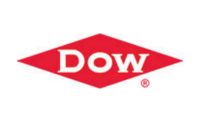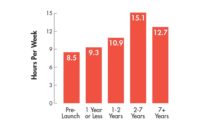Taken together, the speciality geosynthetics market increased from 6.9 billion square metres to 8.0 billion in 2016. In terms of market value the outlook is excellent for an average compound annual growth rate (CAGR) of 2.7 percent over 2016-21 to reach a market value of $21.0 billion, according to Smithers Apex.
Speciality geosynthetic products are engineered specifically for the types of end use projects covered in this report and are designed to meet exact, or threshold engineering standards, often prescribed in government regulations, building codes, or industry best practices. It is the unique and differentiated character of speciality geosynthetics that the market will seek out over the forecast period, and beyond, according to new report The Future of Speciality Geosynthetics to 2021.
Report author Stephen Metzger comments, “The global geosynthetics market has shown significant growth over the past 3-5 years, after a pause during the global recession of 2008-09. Given the growing need for infrastructure building in developing countries, and the heightened worldwide concern for the environment in both the public and private sectors, the market for speciality geosynthetic products should show significant growth over the next five years.”
The Future of Speciality Geosynthetics to 2021 report covers six geosynthetic product types:
- Geotextiles
- Geomembranes
- Geogrids
- Geosynthetic clay liners
- Geocomposites
- Geowall systems.
Among the product types, geotextiles is the largest component of the market, with a 47 percent share in terms of physical volume in 2016. The geotextile market is driven by road and highway construction, and the significant budget being set aside by various countries and regions to expand and improve their roadway networks.
A key aspect of the speciality geosynthetics market is the fact that it is a remarkable example of rapid international technology transfer. Many of the leading manufacturers and distributors have worldwide offices and supply geosynthetic products that incorporate world-class technologies. Even local manufacturers emulate the best available technologies. Thus, with some exceptions, the global market is characterised by a relatively uniform set of materials and engineering practices.
End use markets are organised in four broad segments: transportation; industrial; liquid containment; and construction. Within these broader segments are six major subsegments, which essentially drive the market for an array of speciality geosynthetic products. These major end use subsectors are: coal ash landfills (liquid containment); waterways of various kinds (liquid containment); roofing (construction); substructures (construction); roads, highways, and tunnels (transportation); and solid waste landfills (industrial).
Of the four broad categories covered in this report, transportation is the largest sector in terms of physical volume, with over 50 percent of the market in 2016.
Within the broad categories indicated above, road and highway construction, because of the significant priority placed on it in all major economies, will be a significant part of the market, driving the product categories of geotextiles, geogrids, and geowalls in particular. The roofing and substructure market will be the principal drivers for geomembrane and drainage-related products.
The Future of Speciality Geosynthetics to 2021 is based on extensive primary and secondary research from multiple sources. Interviews were carried out with individuals within major producing companies and other industry participants, including trade associations. Additional data was derived from various published sources, including conference papers and corporate information taken from published financial and technical reports, as well as industry organisations and surveys.








